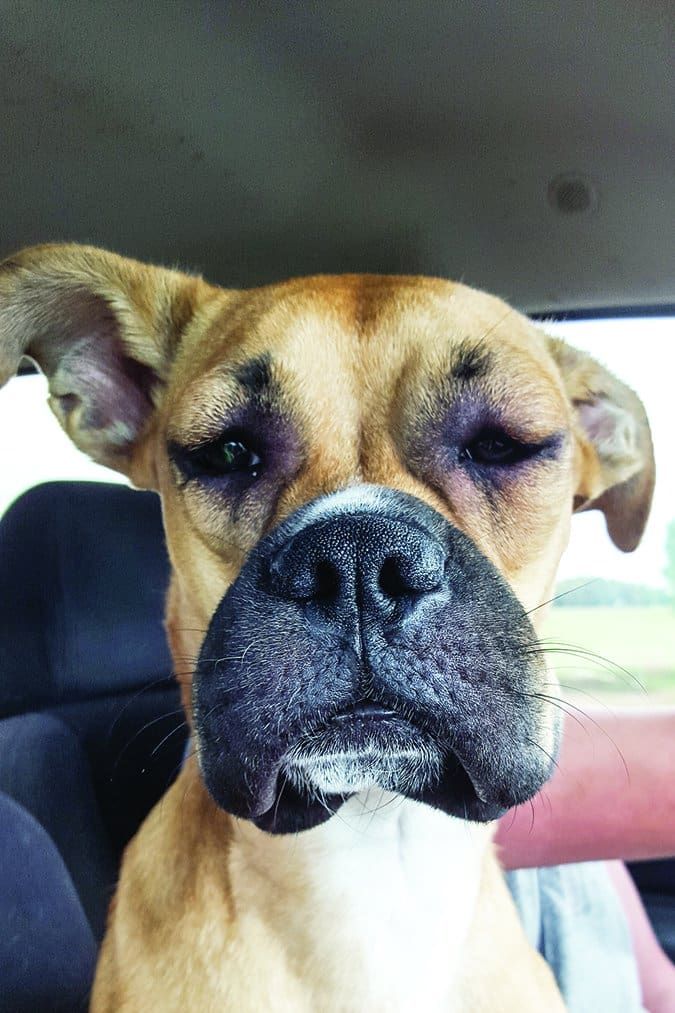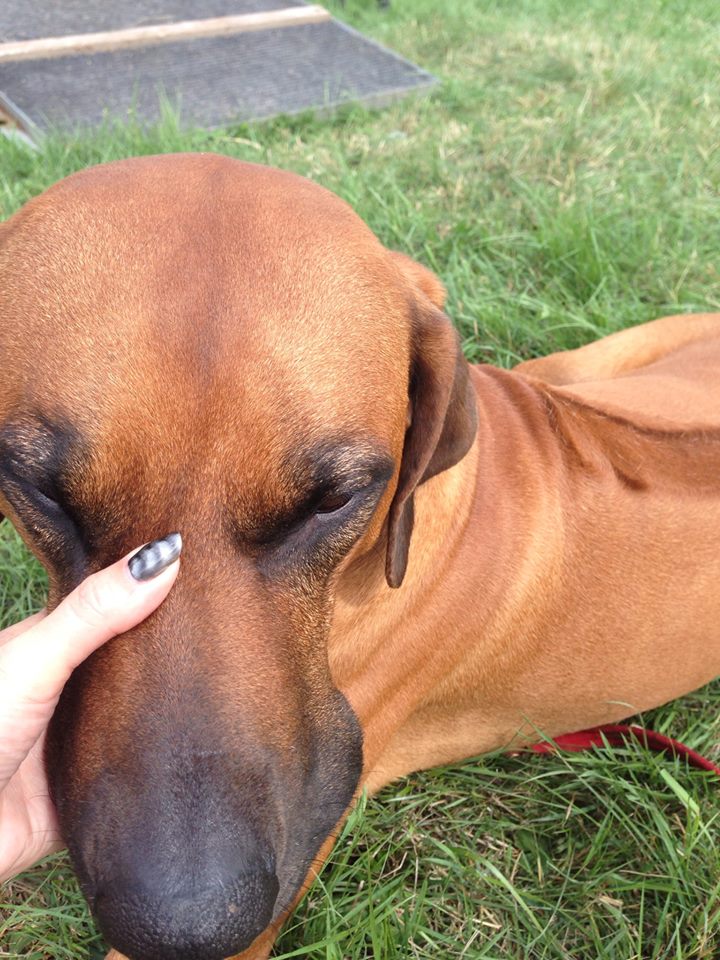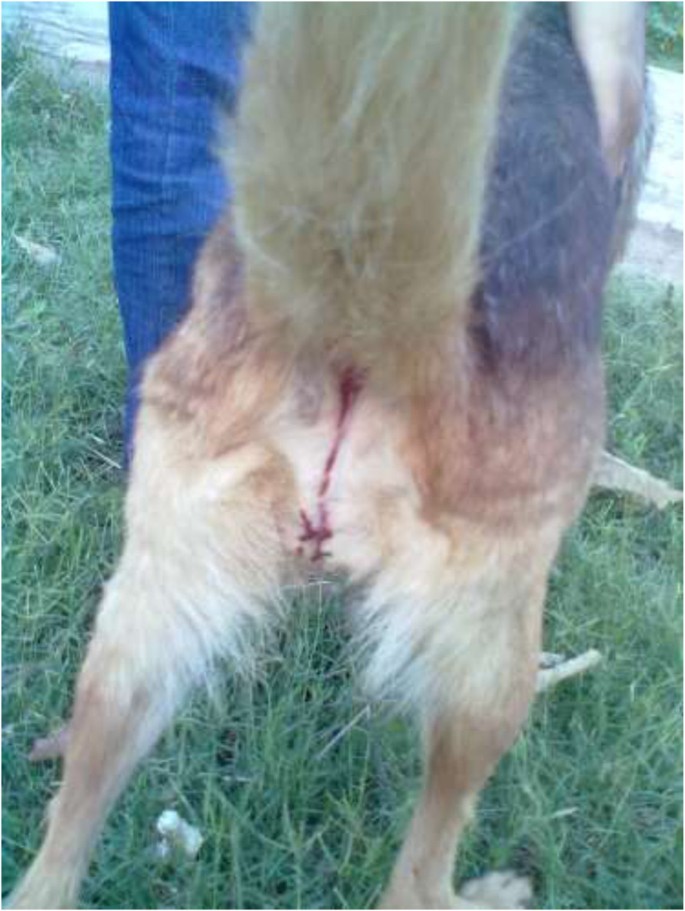Yes, a bee sting can kill a dog. Though rare, it is possible.
Dogs can have severe reactions to bee stings, just like humans. Dogs are curious creatures. They often sniff around and may encounter bees. A single sting can cause pain and swelling. But, multiple stings or an allergic reaction can be fatal.
Some dogs are more sensitive to bee venom. If stung, symptoms can appear quickly. Watch for swelling, vomiting, or difficulty breathing. Immediate vet care is crucial. Knowing how to handle bee stings can save your dog’s life.
Risks Of Bee Stings In Dogs
Bee stings can pose serious risks to dogs, including severe allergic reactions. In rare cases, a bee sting can be fatal. Immediate veterinary care is crucial if your dog shows signs of distress after a sting.
Bee stings can pose several risks to dogs. While some dogs experience mild reactions, others may suffer from severe complications. Understanding the potential risks can help you take quick action and protect your furry friend.Common Reactions
Most dogs have mild reactions to bee stings. These usually include redness, swelling, and pain at the sting site. Your dog may also lick or scratch the area. These symptoms often go away on their own within a few hours. Applying a cold pack can help reduce swelling and pain.Severe Reactions
Some dogs can have severe reactions to bee stings. Symptoms may include difficulty breathing, vomiting, or collapse. This can indicate an allergic reaction, which requires immediate veterinary care. Multiple stings can also lead to severe complications, including organ failure. Quick treatment is crucial in these cases to save your dog’s life. “`
Credit: www.whole-dog-journal.com
Symptoms To Watch For
We all want to keep our furry friends safe. But what happens if your dog gets stung by a bee? It can be a scary situation, especially if you’re unsure about the symptoms to watch for. Knowing what signs to look out for can help you act quickly and keep your dog out of harm’s way.
Immediate Symptoms
When a dog gets stung by a bee, the immediate symptoms can be quite obvious. Most dogs will show a reaction right away. Here’s what you should look for:
- Swelling: The sting area will likely swell up. This is one of the most common signs.
- Redness: The area around the sting may turn red and appear inflamed.
- Pawing or Scratching: Your dog might paw at the sting site or scratch it frequently.
- Whining or Yelping: Bees stings hurt! Your dog may vocalize their discomfort.
- Drooling: Excessive drooling can occur if your dog is in pain or feels unwell.
Delayed Symptoms
Some symptoms might not appear immediately after the sting. These delayed symptoms can be more serious and require your attention:
- Hives: Small, raised bumps on your dog’s skin could indicate an allergic reaction.
- Vomiting: If your dog starts to vomit, this could be a sign of a more severe reaction.
- Difficulty Breathing: This is an emergency. If your dog is struggling to breathe, get to the vet immediately.
- Lethargy: Unusual tiredness or weakness might be a sign that your dog’s body is fighting a reaction.
- Collapse: In extreme cases, your dog might collapse. This is a medical emergency.
It’s important to stay calm and observe your dog closely after a bee sting. Most stings are not life-threatening, but knowing the symptoms to watch for can make all the difference. Do you have a bee sting story to share? Feel free to leave a comment below!
First Aid For Bee Stings
First aid for bee stings in dogs is crucial. Quick action can prevent complications. Understanding how to remove the stinger and use home remedies helps. This ensures your dog’s safety and comfort.
Removing The Stinger
First, locate the stinger. It is usually visible on the skin. Use a flat object, like a credit card, to scrape it off. Avoid using tweezers. This can squeeze more venom into the skin. Work gently and swiftly to remove the stinger.
Home Remedies
After removing the stinger, clean the area with soap and water. Apply a cold compress to reduce swelling. Keep it on for 10 minutes. Repeat as necessary. Baking soda paste can also help. Mix baking soda with water and apply to the sting. Leave it on for a few minutes before rinsing off.
Another remedy is apple cider vinegar. Dab it on the sting with a cotton ball. It can neutralize the venom. Monitor your dog for any signs of allergic reaction. If symptoms worsen, seek veterinary care immediately.

Credit: rhodes2safety.com
When To Seek Veterinary Care
As a pet owner, it can be heart-wrenching to see your furry friend in pain. Bee stings are common, but they can sometimes cause serious problems for dogs. Knowing when to seek veterinary care is crucial. Let’s delve into the signs that signal it’s time to get professional help.
Signs Of Allergic Reactions
Dogs, like humans, can have allergic reactions to bee stings. Some dogs might just have a mild reaction, but others can have severe symptoms. Here are some signs to watch for:
- Swelling: Look for swelling, especially around the face, neck, or throat.
- Hives: Red, itchy bumps on your dog’s skin can indicate an allergic reaction.
- Difficulty Breathing: If your dog is panting heavily or struggling to breathe, get help immediately.
- Vomiting or Diarrhea: These can be signs of a more serious allergic response.
Emergency Situations
Not all bee stings are emergencies, but some situations require immediate veterinary care. Here are a few instances when you should rush to the vet:
- If your dog was stung multiple times, it could lead to a toxic reaction.
- If the sting is inside the mouth or throat, it can cause swelling that blocks the airway.
- If your dog collapses, shows signs of shock, or becomes unresponsive, these are critical signs.
Remember, it’s always better to be safe than sorry. If you’re unsure about your dog’s condition, don’t hesitate to call your vet for advice.
In conclusion, while a bee sting might seem like a small issue, it can become serious quickly. Keep an eye on your dog, and know the signs that indicate a need for professional care. Your vet is your best resource when it comes to keeping your pet safe and healthy.
Preventing Bee Stings
Bee stings can be dangerous for dogs, especially if they have allergies. While it’s hard to control every outdoor situation, there are steps you can take to prevent bee stings. Let’s explore some practical ways to keep your furry friend safe from bees.
Avoiding High-risk Areas
First things first, know where bees hang out. Bees love flowers, so avoid areas with lots of blooming plants. Parks, gardens, and even your backyard can be buzzing with bees during certain times of the year.
- Gardens: Steer clear of flower beds and blooming bushes.
- Picnics: Keep your dog away from food and drink areas where bees might be attracted.
- Trash: Bees are sometimes found around garbage bins, so avoid those spots.
If you spot a beehive, make sure to keep your dog far away. It’s better to be safe than sorry!
Training Your Dog
Training your dog can also help prevent bee stings. Teach your dog basic commands like “leave it” or “come here” to keep them away from bees.
- Basic Commands: Use treats to train your dog to come when called.
- Positive Reinforcement: Reward your dog for staying calm and not chasing bees.
- Socialization: Expose your dog to different environments so they learn to stay focused on you.
Training takes time, but it’s worth it. A well-trained dog is less likely to get into trouble with bees.
By avoiding high-risk areas and training your dog, you can significantly reduce the risk of bee stings. These simple steps will help keep your dog safe and happy. After all, a little prevention goes a long way!
Treatment Options
Understanding the treatment options for a dog stung by a bee is crucial. Quick action can save your dog’s life. Let’s explore the treatments available.
Medications
Antihistamines can reduce swelling and itching. Benadryl is a common choice. Always consult your vet before giving any medication. Pain relief medications may also be needed. Your vet will recommend the best options for your dog.
Veterinary Procedures
If the sting reaction is severe, your dog may need veterinary care. The vet might administer epinephrine for an allergic reaction. Intravenous fluids can prevent shock. In some cases, oxygen therapy may be necessary. The vet will monitor your dog’s vital signs closely.
For mild reactions, the vet may just observe your dog. They will ensure no complications arise. Always follow the vet’s advice for post-treatment care at home.
Long-term Effects
Long-term effects of a bee sting on a dog can vary. Some dogs recover quickly. Others may face lasting issues. Let’s explore the potential complications and how to monitor recovery.
Potential Complications
Bee stings can cause allergic reactions. Some dogs might develop skin infections. Swelling or redness may persist for days. Rarely, kidney or heart problems can occur. Keep an eye on your dog’s behavior. Changes may indicate complications.
Monitoring Recovery
Watch your dog closely after a sting. Note any unusual signs. Difficulty breathing or eating is a concern. Excessive scratching or licking should be monitored. Visit the vet if symptoms worsen. Regular check-ups ensure a safe recovery. Stay attentive to your dog’s needs.
Myths And Misconceptions
Many dog owners worry about bee stings. This concern often leads to myths and misconceptions. Understanding the truth helps keep your dog safe.
Common Myths
One common myth is that a single bee sting can always kill a dog. This is not true for most dogs. Another myth is that small dogs are more at risk than large dogs. Size does not determine the risk level.
Many believe that all bee stings are equally dangerous. This is also false. Reactions can vary greatly between dogs.
Scientific Facts
Most dogs experience minor symptoms from a bee sting. These include swelling and pain. Some dogs are allergic to bee stings. An allergic reaction can be serious and needs immediate care.
The location of the sting also matters. Stings inside the mouth or throat can cause breathing problems. This is more dangerous than a sting on the paw or body.
Not all bees have the same venom. Honeybees and bumblebees have different effects. Knowing the type of bee can help in treating your dog.

Credit: jvat.biomedcentral.com
Frequently Asked Questions
Will My Dog Be Ok After A Bee Sting?
Most dogs recover well after a bee sting. Monitor for severe reactions like swelling, difficulty breathing, or excessive drooling. Consult a vet if symptoms worsen.
What Should I Do If My Dog Has Been Stung By A Bee?
Remove the stinger gently using a card or tweezers. Apply a cold compress to reduce swelling. Give an antihistamine like Benadryl if approved by your vet. Monitor for allergic reactions such as difficulty breathing. Contact your vet immediately if symptoms worsen.
Should I Give My Dog Benadryl For A Bee Sting?
Consult your vet before giving Benadryl to your dog for a bee sting. Dosage and safety vary by dog.
How Soon After A Bee Sting Does Anaphylaxis Occur In Dogs?
Anaphylaxis in dogs can occur within minutes to hours after a bee sting. Seek immediate veterinary care.
Conclusion
A bee sting can be serious for dogs. Always watch for allergic reactions. Swelling, trouble breathing, or vomiting need immediate vet care. Keep your dog calm and cool. Remove the stinger if you can see it. Prevention is key. Keep your yard free of bees.
Supervise your dog while outside. Quick action can save your dog’s life. Stay informed and prepared. Your dog’s health depends on you.